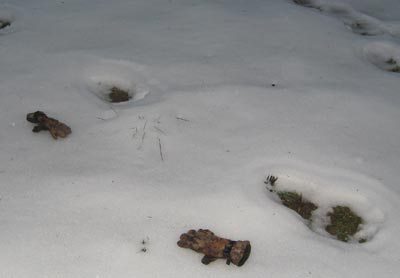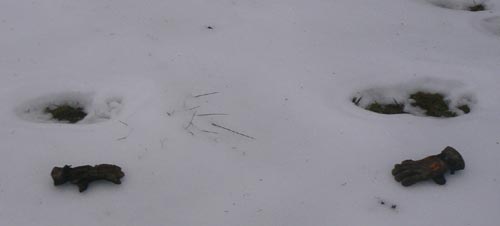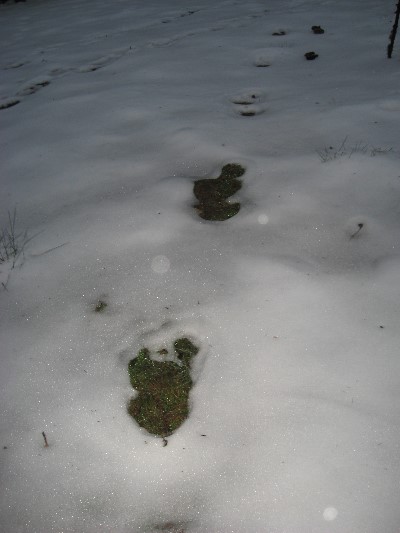|
|

The image above should be refered to as "Puget-One"
in the discussion forum.

The image above should be refered to as "Puget-Two"
in the discussion forum.
These photos were obtained near Puget Sound not long after the
major snow storm of Christmas 2008.
There have been several sightings in the Puget Sound region over
the years, including some mentioned in John Green's "The Apes
Among Us." Old reports and Indian legends from a specific part
of the Sound, combined with some new local informants, led BFRO
Investigator Derek Randles to look around there after the big Christmas
snowstorm, on a hunch that snow tracks might be easier to spot.
This was the storm that pinned down Seattle for a few days. Seattle
and the Puget Sound rarely get as much snow as they did at the end
of 2008.
Deer herds tend to move around after big snow storms, especially
in areas that rarely receive snow. Derek had an hunch that snow
tracks of resident sasquatches might be easier to spot as well.
Apparently he was right.
There were at least 24 tracks counted crossing a meadow where snow
had not yet melted. The tracks continued on into the woods beyond
the point that he stopped counting them.
The tracks were roughly 16.5 inches long. The strides were roughly
4.5 ft long. The gloves shown in the photo are 10.5 inches long.
We know much more about this location now than we did when the photos
were first obtained. Suffice it to say we are quite confident that
these snow tracks are legitimate.
Notice the "high-wire" pattern of the tracks -- the linear
pattern, as if the figure was walking along a tight rope. Human
tracks normally make a zig-zap pattern when we walk or run, and
our feet are pointed slightly outward. The longer strides of sasquatch
tracks fall into a straighter line, with the feet pointed slightly
inward, rather than outward, in many of the steps.

The image above should be refered to as "Puget-Three"
in the discussion forum.
.
When a sasquatch is moving slower (i.e. their tracks show a shorter
stride) the pattern is more like the zig-zag pattern of a human
walk. As the stride gets longer, however, the footprints are more
or less directly in front of each other.
There will be many ideas and theories for why this would be. Anyone
speculating on this should consider that sasquatches live in a different
world than humans. They often walk and run along narrow deer trails
-- trails that can be traveled at much higher speeds, with less
snagging on the sides of those trails, if the feet are falling in
front of each other rather than to the sides. As with most adaptations
among animals, the environment and lifestyle of sasquatches will
usually help explain their adaptations.
Click the images below for a larger view. See the discussion
forum thread about these tracks.
|





















